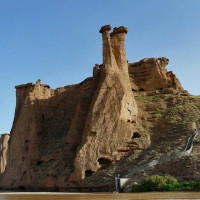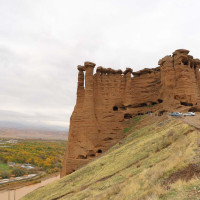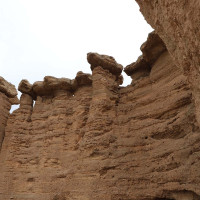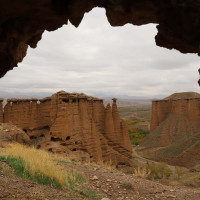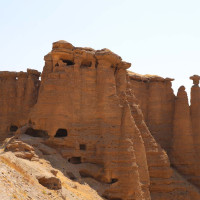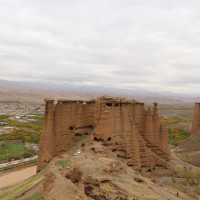Behestan Castle is located next to Qizil Üzan River and the village of Behestan, ten kilometers southeast of the city Mahneshan and one hundred kilometers west of Zanjan.
On the southern sides of the Qizil Üzan River that sources from heights of Chehel Cheshmeh in Kordestan and end up entering the Caspian Sea, in the land called Mahneshan where once the Medes lived, there are two megaliths made of sandstone. They are about one hundred meters distant from each other and are located two thousand and five hundred meters higher than sea level.
Thousands of years of rain, lashes of the wind, and cycles of warmth and cold have eroded these Iranian man-made structures. After so many years of erosion, what remains of them is called Dudkesh-e Jen and Takht-e Div by local people. The Specialists speculate that the name Mahneshan is on one hand related to the Medes people. The Madabad Village close to this area is a proof of this. On the other hand, they believe that it can be the changed form of the word Meynushan (drinkers of the wine).
Behestan Castle of Mahneshan traces back to ancient Iran. It was the habitat of humans in the middle centuries, from one thousand and three hundred B.C. to five hundred years ago. The structures dug into the mountain include corridors and staircases that have been combined with vaults and shelves on different parts of the megalith. The remaining part of this historical structure shows that it had more than one story. The staircase is built in the form of zigzag and the rooms have gradually been added to the castle. In the upper section of the castle there is a part that has a coat of plaster. It has a pool made from stone and Sarooj that is a certain kind of water-resistant mortar. The pool is seven meters tall and three meters wide. It is fed by a kind of Tanbusheh clay pipes called Gang.
The mountain that holds Behestan Castle is from marble, conglomerate, sandstone, clay, marl, mica and schist. Its geological formation goes back to Miocene and Pliocene periods in twenty million years ago.


